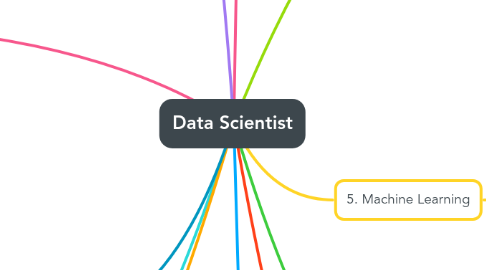
1. 7. Feature Engineering
1.1. Baseline Model
1.2. Categorical Encodings
1.3. Feature Generation
1.4. Feature Selection
2. 5. Machine Learning
2.1. Introduction
2.1.1. How Model Works
2.1.2. Basic Data Exploration
2.1.3. First ML Model
2.1.4. Model Validation
2.1.5. Underfitting & Overfitting
2.1.6. Random Forests (Python | R)
2.1.7. scikit-learn
2.2. Intermediate
2.2.1. Handling Missing Values
2.2.2. Handling Categorical Variables
2.2.3. Pipelines
2.2.4. Cross-Validation (R)
2.2.5. XGBoost (Python | R)
2.2.6. Data Leakage
3. 1. Mathematics
3.1. Linear Algebra
3.2. Analytic Geometry
3.3. Matrix
3.4. Vector Calculus
3.5. Optimization
3.6. Regression
3.7. Dimensionality Reduction
3.8. Density Estimation
3.9. Classification
4. 3. Statics
4.1. Introduction to Statistics
4.2. Data Description
4.3. Random Samples
4.4. Sampling Distribution
4.5. Parameter Estimation
4.6. Hypotheses Testing (Python | R)
4.7. ANOVA (Python | R)
4.8. Reliability Engineering
4.9. Stochastic Process
4.10. Computer Simulation
4.11. Design of Experiments
4.12. Simple Linear Regression
4.13. Correlation
4.14. Multiple Regression (Python | R)
4.15. Nonparametric Statistics
4.15.1. Sign Test
4.15.2. The Wilcoxon Signed-Rank Test (R)
4.15.3. The Wilcoxon Rank Sum Test
4.15.4. The Kruskal-Wallis Test (R)
4.16. Statistical Quality Control
4.17. Basics of Graphs
5. 9. Data Visualization Tools
5.1. Excel VBA
5.2. BI (Business Intelligence)
5.2.1. Tableau
5.2.2. Power BI
5.2.3. Qlik View
5.2.4. Qlik Sense
6. 2. Probability
6.1. Introduction to Probability
6.2. 1D Random Variable
6.3. The function of One Random Variable
6.4. Joint Probability Distribution
6.5. Discrete Distribution
6.5.1. Binomial (Python | R)
6.5.2. Bernoulli
6.5.3. Geometric
6.6. Continuous Distribution
6.6.1. Uniform
6.6.2. Exponential
6.6.3. Gamma
6.7. Normal Distribution (Python | R)
7. 11. Other Points to Learn
7.1. Domain Knowledge
7.2. Communication Skill
7.3. Reinforcement Learning
7.4. Different Case Studies
7.4.1. Data Science at Netflix
7.4.2. Data Science at Flipkart
7.4.3. Project on Credit Card Fraud Detection
7.4.4. Project on Movie Recommendation, etc.
8. 4. Programming
8.1. Python
8.1.1. Python Basics
8.1.1.1. List
8.1.1.2. Set
8.1.1.3. Tuples
8.1.1.4. Dictionary
8.1.1.5. Function, etc.
8.1.2. NumPy
8.1.3. Pandas
8.1.4. Matplotlib/Seaborn, etc.
8.2. R
8.2.1. R Basics
8.2.1.1. Vector
8.2.1.2. List
8.2.1.3. Data Frame
8.2.1.4. Matrix
8.2.1.5. Array
8.2.2. dplyr
8.2.3. ggplot2
8.2.4. Tidyr
8.2.5. Shiny, etc.
8.3. DataBase
8.3.1. SQL
8.3.2. MongoDB
8.4. Other
8.4.1. Data Structure
8.4.2. Web Scraping (Python | R)
8.4.3. Linux
8.4.4. Git
